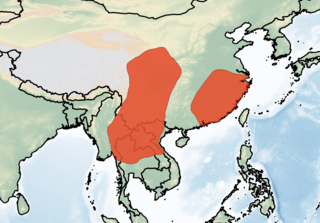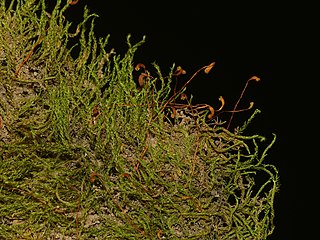
The International Union for Conservation of Nature (IUCN) Red List of Threatened Species, also known as the IUCN Red List or Red Data Book, founded in 1964, is an inventory of the global conservation status and extinction risk of biological species. A series of Regional Red Lists are produced by countries and organizations, which assess the risk of extinction to species within a political management unit.

The basking shark is the second-largest living shark and fish, after the whale shark, and one of three plankton-eating shark species, along with the whale shark and megamouth shark. Adults typically reach 7.9 m (26 ft) in length. It is usually greyish-brown, with mottled skin, with the inside of the mouth being white in color. The caudal fin has a strong lateral keel and a crescent shape. Other common names include bone shark, elephant shark, sail-fish, and sun-fish. In Orkney it is called hoe-mother, meaning "the mother of the picked dog-fish".

A species that is extinct in the wild (EW) is one that has been categorized by the International Union for Conservation of Nature as known only by living members kept in captivity or as a naturalized population outside its historic range due to massive habitat loss.

Cadorna's pipistrelle is a species of vesper bat in the family Vespertilionidae. It is found in India, Laos, Myanmar, Thailand, and Vietnam.

The big-eared pipistrelle is a species of vesper bat in the family Vespertilionidae. It can be found in Indonesia and Malaysia. It forages over mud flats over Peninsula Malaysia but its roosting activities are unknown. Its habitat is being threatened by deforestation for agriculture, plantations, logging and fires but how it affects this bat or if it is adaptable are unknown.

The Chinese pipistrelle is a species of vesper bat in the family Vespertilionidae. It is found in China, Laos, Thailand, and Vietnam.

The Yuma myotis is a species of vesper bat native to western North America.
Bryoxiphium madeirense is a species of moss in the Bryoxiphiaceae family. It is endemic to the Island of Madeira in the North Atlantic, part of Portugal.
Frullania polysticta is a species of liverwort in the family Frullaniaceae. It is found in Portugal and Spain.
Radula jonesii is a species of liverwort in the family Radulaceae. It is known from a few locations on Madeira and one location on Tenerife. The populations are small and vulnerable.
Riccia atlantica is a species of liverwort in the family Ricciaceae. It is endemic to the Madeira archipelago and the Savage Islands in Portugal. Its natural habitat is rocky shores.
Thamnobryum angustifolium, the Derbyshire feathermoss, is a species of moss in the Neckeraceae family. It is endemic to Derbyshire, England, being restricted to a single SSSI, where the main colony covers about 3 square metres (32 sq ft) of a single rock face, with small subsidiary colonies nearby. Threats include disturbance from cavers and climbers, collection by bryologists, pollution of the spring in which it grows, and desiccation during periods of drought. Its natural habitat is rivers.

Thamnobryum is a genus of moss in the family Neckeraceae. There are about 50 species. The genus is distributed throughout the world.

Neckeraceae is a moss family in the order Hypnales. There are about 200 species native to temperate and tropical regions. Most grow on rocks, or other plants.

Betta simorum is a species of gourami endemic to Indonesia. This species grows to a length of 6.4 centimetres (2.5 in) SL. This species can also be found in the aquarium trade. The species was named simorum and uses the Latin genitive plural "of the Sims", named so in honour of Thomas G. K. Sim and his wife Farrah, of Sindo Aquarium in Jambi, Sumatra.
Thamnobryum alleghaniense, the Allegany thamnobryum moss, is located in temperate regions, mostly in the Northern Hemisphere. This moss has drooping branches at the top of a standing stem, resembling small trees in a micro forest. T. alleghaniense is common on rocks in moist, wet, and shady gorges and ravines. Leaf shape is ovate (-oblong), sometimes lanceolate or ligulate. Seta is 10-25mm. Contain dioecious reproduction, and rarely polyocious.

The long-toothed pipistrelle is a species of bat of the genus Hypsugo. It is a small bat, with a length of 35.2–38.4 mm of forearm, and 5.9–7 mm of foot. It feeds on insects and has especially long canines compared to others of its genus.

Thamnobryum alopecurum is a species of moss belonging to the family Neckeraceae.
Convolvulus fernandesii is a species of plant in the family Convolvulaceae. It is endemic to the Arrábida Natural Park, Portugal.

Hygroamblystegium varium is a species of moss in the Amblystegiaceae family. It has a cosmopolitan distribution.













